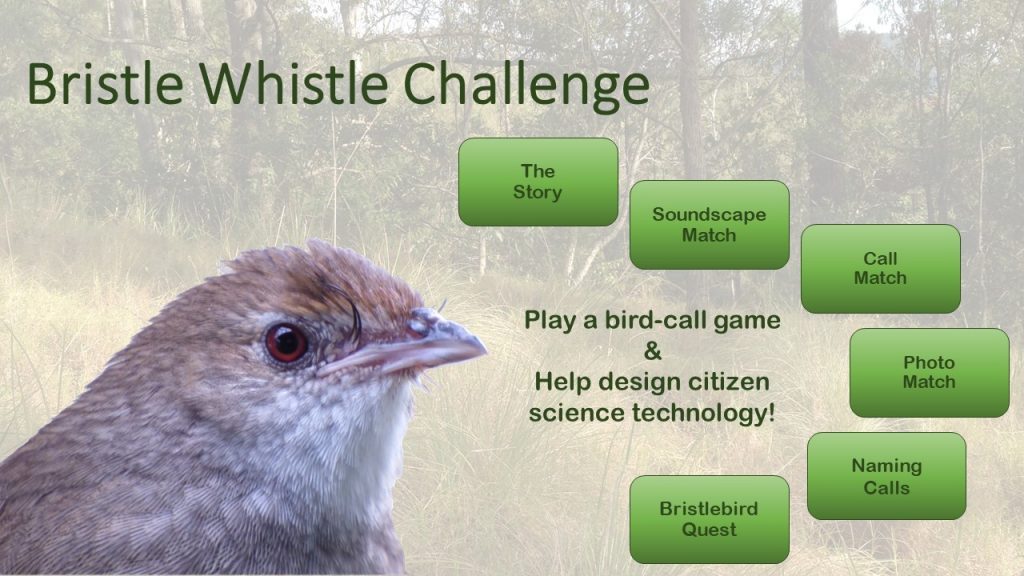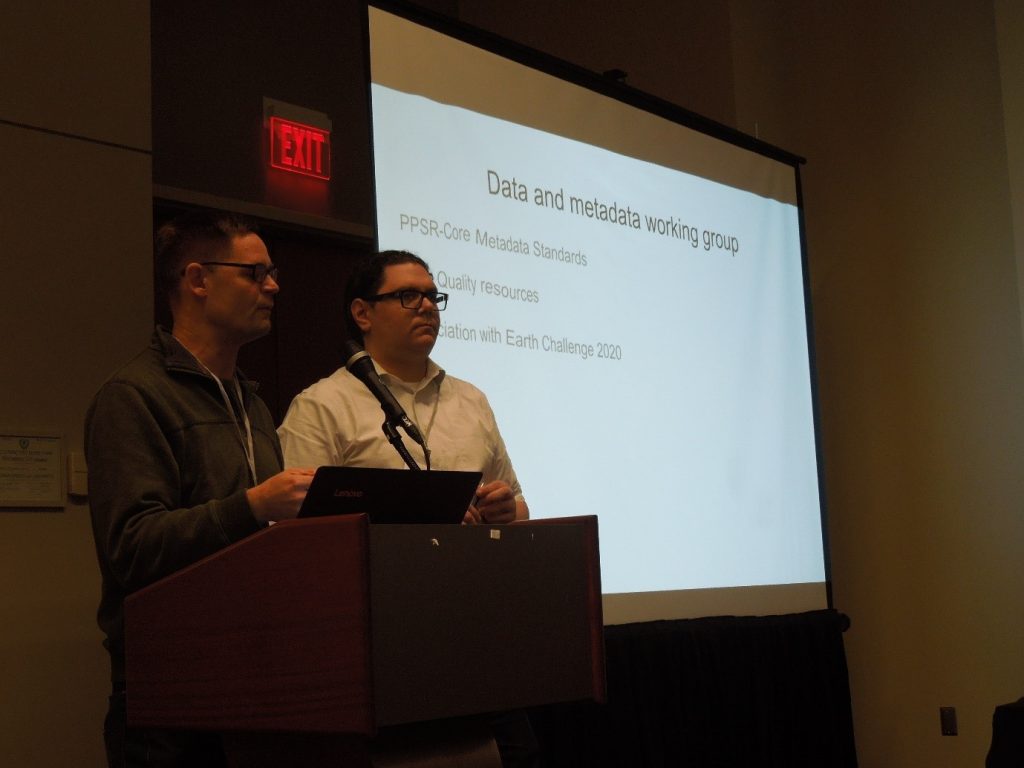Editor’s note: This is the second blog from Jessie after her trip to the Citizen Science Association 2019 conference (read the first one here). This one is focused on technology choices around citizen science – something very close to our hearts here at Gaia Resources.
Perhaps you enjoy spending your leisure time in nature? Does playing games online strikes your fancy? Are you thrilled about another activity or cause? Do you love science communication? Perhaps you are considering exploring citizen science as an avenue to follow your passions, but where do you start? Before you dive into creating a new group or project, it’s worth exploring what groups, resources and projects already exist. If you haven’t found the prefect project to jump straight into and you are game to create one, then it’s worth considering if there are already online platforms that can assist you with your project – and I have seen quite a few of the platforms around the world from the #CitSci2019 conference!
If your project involves collecting observations of nature and then entering them online, the citsci.org platform offers this functionality for projects in the United States. The citsci.org leaders also ran symposium that explored funding models of different organisations running large scale projects. The room was absolutely packed, which clearly demonstrated to me the struggle we all have with sustainably funding long-term projects!
"Exploring Sustainable Funding Models for #CitizenScience" #CitSci2019 Symposium was packed yesterday! I think this speaks to #citsci funding struggles being ubiquitous. Nice job Greg Newman & Russell Scarpino (@CitSci), Luigi Ceccaroni (@Earthwatch_Eur), & Dixon Butler (@ylaces) pic.twitter.com/0Y0sd28kQF
— Jessie Oliver (@JessieLOliver) March 16, 2019
If you are interested in kicking off a project that entails online tasks, such as transcription of datasheets or classification of media such as images, audio, and video, then it’s worth checking out the project builder on the Zooniverse platform. The Zooniverse currently hosts nearly a hundred online projects focused on several areas of science and some even overlapping with humanities. I was thrilled that #CitSci2019 gave me the opportunity to learn more about this platform in the context of my own technology design research on how to design engaging technologies to search environmental audio recordings to find Eastern bristlebirds.

A sample prototype page from Jessie’s research that she shared during her talks and networking
Of course, Gaia Resources has also been developing their own citizen science toolkit, called Project Hydra, and has used this to deliver many citizen science apps like these. The nearest Australian equivalent is the BioCollect platform developed by folks with the Atlas of Living Australia, which is a biodiversity data repository. The Gaia Resources team (especially Piers and Alex) are keeping an eye on all the platforms that are out there and can certainly help advise people on the available tools.
What if existing tools and platforms don’t do what you need? If you have a vision for a project, but you don’t have access to the technologies needed to make your project a reality then there is nothing to stop you from starting – time to get brainstorming!
There is a lot of talk within the citizen science community about the strategies of citizen science project design strategies, and it’s certainly important to consider what strategy is best for your project idea and your anticipated community. Most projects in Australia are led by scientists and engage citizen scientists to contribute data or analysis skills. Another less common but important strategy is when projects are driven by members of the public who then recruit scientists to contribute expertise to ensure a project is developed in a scientifically rigorous way. Other projects are also cooperatively created, or co-created, with scientists and community members working together from the start.
As you begin to think about technological needs, it is similarly important to consider who is going to be involved in creating technologies, at what stages, how, and why. Typically, technologies for citizen science are often envisioned by scientists who have the aim of solving specific scientific riddles. If scientists are creating technologies in isolation, focused on their scientific objectives, they may not always be well positioned to determine whom might use their technologies, as well as where, how, and when. Are scientists well positioned to study people’s practices, tech use habits, or hobby motivations well beyond the science? Sometimes, sure, particularly if we are talking about social scientists and anthropologists; however, scientists focused on solving ecological woes may not always have time or knowledge to study people’s requirements too. Conversely, community members without any scientific training may not have the background to inform developing technology in ways that will lead to scientifically rigorous outcomes. So, what is a person to do?!
This is where technology designers can help! Folks like myself, trained in Human Computer Interaction (HCI) design, can work with both scientists and community members to explore alignment of interests and goals. Contrary to what most people imagine when I describe my work in technology design, I spend my days studying people, often taking an ethnography research approach with a high level of empathy, to understand people’s practices, motivations for activities, technology use, and more. Most people start considering questions such as:
- Does my project idea require field devices to complete tasks or collect data?
- Does my project need an online data portal?
- Does my project require a mobile application?
- What should such technologies look like?
Before diving into these questions too deeply, however, I typically take a bit step back and consider a different suite of questions first, including:
- Who do I anticipate will be core contributors to a project?
- What evidence do I have to support this?
- Is there a way we could understand this better before creating anything?
- How can existing practices of anticipated participants inform the design of project technologies?
Beyond creating new projects, it’s also important to consider how existing technologies like application and website interfaces might benefit from a facelift. I am particularly keen to also help folks explore re-designing existing technology iteratively (i.e. design, evaluate use, improve design, re-evaluate, repeat). To do this I come from a slightly different angle, working with folks using the technologies to identify barriers to use, ways to extend accessibility, techniques to enhance short and long-term use integration, reaching citizen science groups, and more.
This is the sort of role that we have been discussing for Gaia Resources, to bring my HCI expertise (and of course, Morgan’s accessibility expertise) into the future of the citizen science offerings from the company. It will be exciting times (when I get back to Australia!).
Now we have a platform designed and technologies chosen, how do I make sure my project’s data is useable for others?
Welcome to the exciting world of data and metadata! Don’t know the difference between the two? Yeah, neither did I until a few years ago. If you would like more information, this blog from some of our European colleagues does a pretty good job at breaking down data, metadata (data about data), the importance of standardising data, and the ability to exchange data between different databases (i.e. data interoperability).
Groups around the globe are working together to create standards for citizen science data to maximise its usefulness, and to ensure data can be exchanged between the different databases around the world. Being involved in these discussions for several years now, I attended several meetings, talks, and workshops related to advancing these efforts. Stay tuned as this diverse group is currently exploring how to get more information out there to everybody.

Co-chairs Greg Newman (left) and Justin Schell (left) leading a discussion on data and metadata
What if other people are investigating the same general topic, but using different methods?
It’s an ideal scenario for creating an online ‘one-stop-shop’ for people to find and discuss a suite of methods being used. Then newcomers can also explore what methods are out there and most likely to work in their respective regions with a given population of people. If the methods shared need some tweaking to work in a new region or with new people, than iterative adaptations can then be shared back into the group for others to use.
It is this idea that is the basis of the developing consortium called Global Mosquito Alert, which aims to bring mosquito monitoring citizen science methods together. Over the last few years, I have looked to understand what mosquito monitoring projects engage citizen scientists and how in Australia, and have liaised between those groups and the global consortium. While at #CitSci2019, I was asked to join a panel discussing how the Global Mosquito Alert consortium folks exchange knowledge, and how the consortium are likely to work with the develop Citizen Science Global Partnership and Earth Challenge 2020 initiatives. It’s wonderful to see so many people working together from around the world to harness technology to increase the impact of citizen science!
If you are interested in more discussion about citizen science and technology, don’t hesitate to let me or other folks at Gaia Resources know (via their social media channels or directly through to Piers or Alex). We’ve got plans afoot at Gaia Resources around technology and design that Piers and I will be discussing when I am back from this trip so stay tuned for more from us on technology and citizen science!
Jessie

Comments are closed.